#roman border
Explore tagged Tumblr posts
Text


Model of Housesteads Roman Fort, Hadrian's Wall, The British Museum, London
#romans#roman#Hadrian's Wall#archaeology#ancient crafts#ancient cultures#ancient living#fort#roman army#roman soldiers#roman design#roman building#roman empire#roman border#northumberland
51 notes
·
View notes
Note
seeing all those sheep/goat vaschete asks inspired me to draw these (they got a bit more lazy as i went on but it's whatevs)
i like to imagine that machete could be a long haired goat breed which would give him his signature floof! couldn't choose which one to settle with tho ^^"

.
#aaaa these are so charming#I'm having trouble deciding which one I like the most#the goats have the floof and impressive horns#but the two sheep are also really appealing from character design standpoint#border leicester is one of my favorite breeds of sheep they have such excellent shapes#intense roman noses and big rabbit ears#and it's kind of comical how little Machete's face changes when you switch from dog to this specific sheep#and jacob sheep are simply iconic in their own right#these are lovely#thank you!#gift art#sloppygoaty#Machete#own characters#you have a lot more faith in his capability to grow a pair impressive horns than I do#I feel like his would either be kind of unremarkable#or he would have them removed entirely to look more sheeplike
386 notes
·
View notes
Text
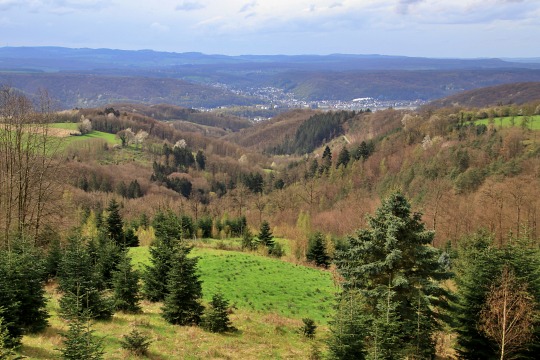
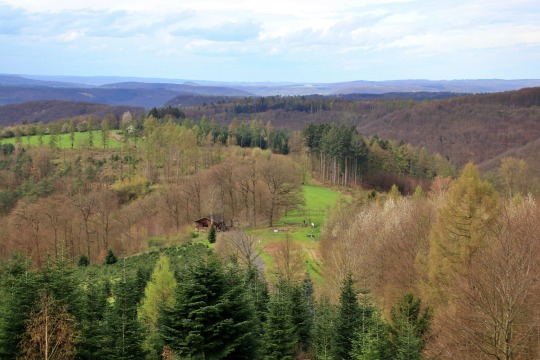
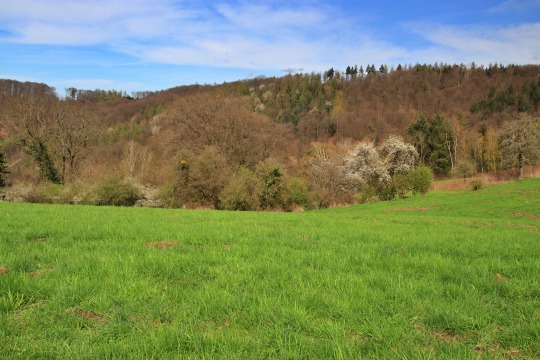
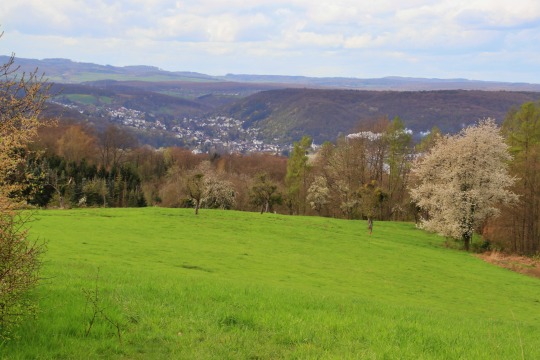
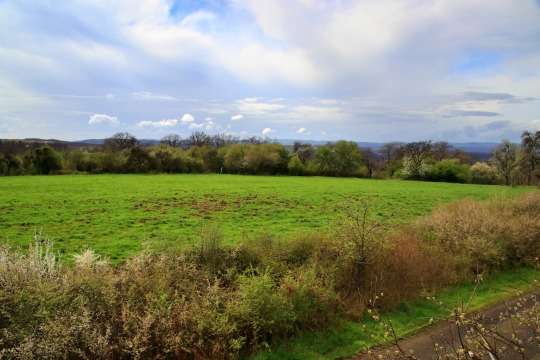
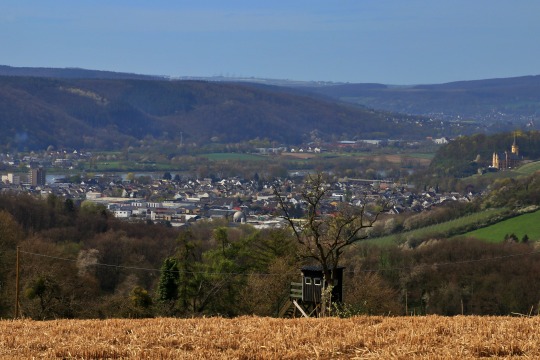
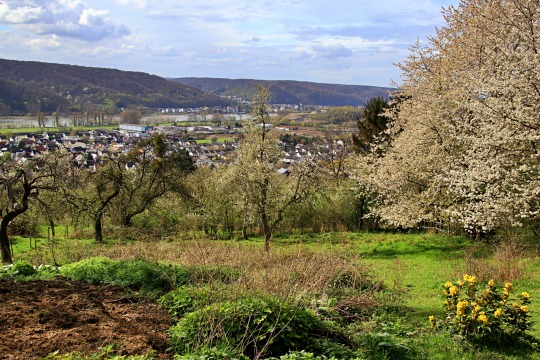
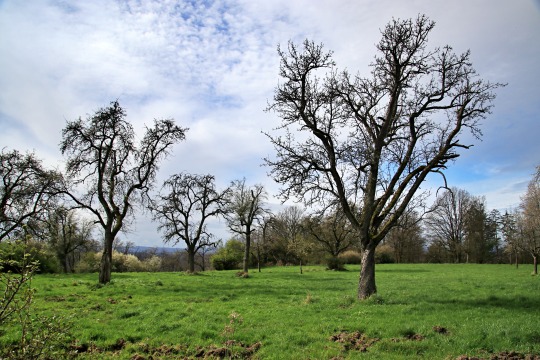
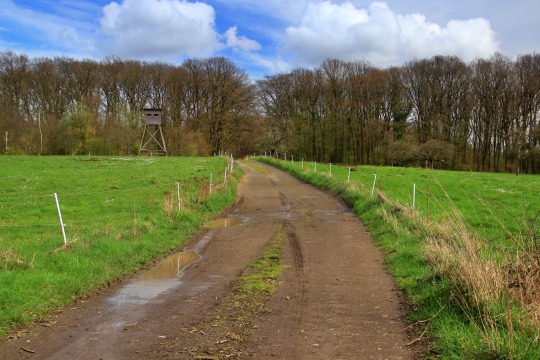
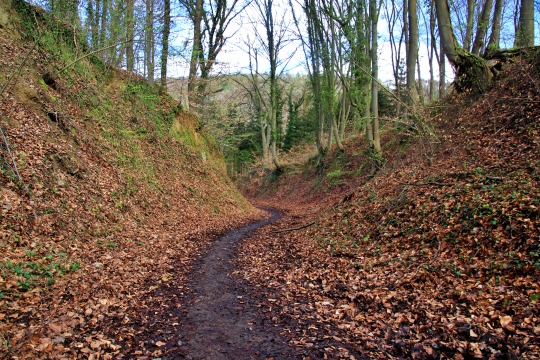
Limes trail - border of the Roman Empire ( Bad Hönningen & Rheinbrohl / Germany )
#roman empire#ancient rome#hiking trail#explore#adventure#nature#photooftheday#limes#pickoftheday#aroundtheworld#outdoors#limestrail#landscape#deutschland#rheinland pfalz#hiking#germany#border#trekking#wanderlust#springtime#spring#trip#nature photography#trees#forest#onedaytrip
21 notes
·
View notes
Text
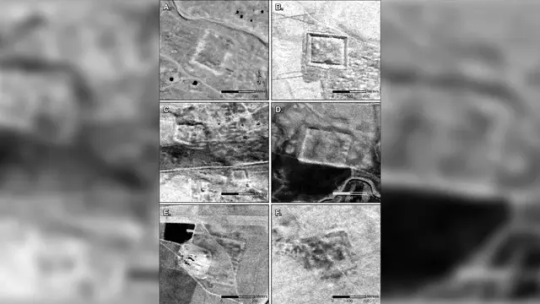
Spy Satellite Photos Reveal Hundreds of Long-Lost Roman Forts
Declassified photos captured by United States spy satellites launched during the Cold War have revealed an archaeological treasure trove: hundreds of previously unknown Roman-era forts, in what is now Iraq and Syria.
Many of those long-lost structures may be gone forever at this point, destroyed or damaged over recent decades due to agricultural expansion, urban development and war. Nevertheless, the discovery of the forts’ existence challenges a popular hypothesis established in the 1930s about the role of such fortifications along the ancient Roman Empire’s eastern border, researchers reported Wednesday in the journal Antiquity.
Based on the satellite views, the high number of forts and their widespread distribution hints that the forts may not have been erected to keep enemies out, as the decades-old theory suggested. Rather, the structures were likely built to ensure safe passage for caravans and travelers along routes that saw plenty of nonmilitary traffic. These forts, according to the study authors, were outposts and havens, not hostile barriers.
High-resolution images analyzed in the new study were taken during flyovers by multiple satellites belonging to two US military programs: the Corona Project (1960 to 1972) and Hexagon (1971 to 1986). Corona’s images were declassified in 1995, and Hexagon’s photos were released to the public in 2011.
Images from Hexagon and Corona are invaluable for archaeologists because they preserve snapshots of landscapes that have since undergone significant disruption, said lead study author Jesse Casana, an archaeologist and professor in the department of anthropology at Dartmouth College in New Hampshire.
“Agriculture and urbanization have destroyed a lot of archaeological sites and features to a shocking degree,” Casana said. “This old imagery allows us to see things that are often either obscured or no longer extant today.”
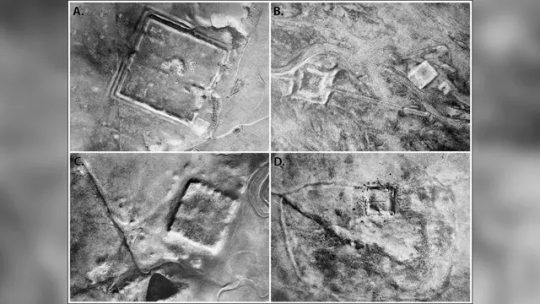
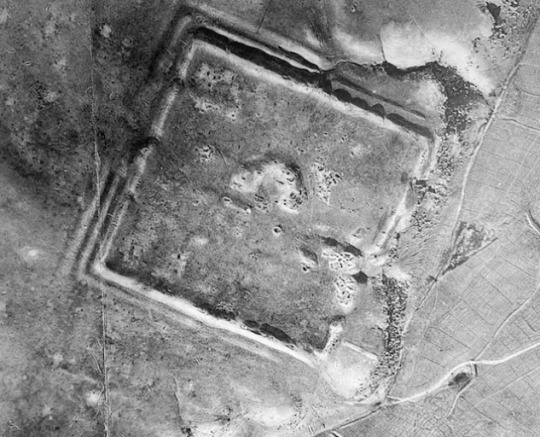
Spy satellite photos vs. the Poidebard survey
Satellite images are especially helpful for searches across the northern part of the Fertile Crescent in the Middle East — from the eastern coast of the Mediterranean to western Iran — because of the area’s archaeological importance and high visibility of the ground in photos, Casana added.
The research team pored over the images for signs of Roman forts, which have a distinctive square shape and walls that usually measure about 164 to 262 feet (50 to 80 meters) long. The scientists began their search using reference maps from an aerial survey of the region conducted in the 1920s and 1930s by French archaeologist and Jesuit missionary Father Antoine Poidebard. That survey was among the first to photograph archaeological sites from the air, and in 1934 Poidebard reported finding 116 Roman forts.
It was an unprecedented achievement. But nearly a century later, mapping Poidebard’s forts to satellite photos was challenging. Because his map wasn’t large-scale, it contained numerous spatial errors, Casana said. Poidebard also did not provide names or numbers for most of the forts he found, identifying them instead by their proximity to geologic features.
Those forts were aligned north to south along what was once the easternmost boundary of the Roman Empire, according to Poidebard. This arrangement, he claimed, was surely intended to guard against invaders from the east.
But Poidebard’s survey provided only a partial view of Rome’s ancient infrastructure, the researchers found. What he overlooked — and what the satellite photos revealed — was that the north-to-south line of 116 forts was actually only a narrow sliver of a cluster spreading from east to west and containing 396 fortified structures.
The forts spanned approximately 116,000 square miles (300,000 square kilometers), “extending from Mosul, on the Tigris River in Iraq, through Ninawa province, across the Khabur and the Balikh valleys, continuing to the semi-arid plains west of the Euphrates River, leading to western Syria and the Mediterranean,” according to the study.
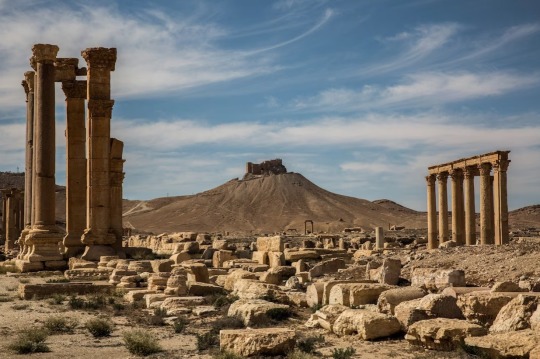
Oases of safety for ancient Rome
When the archaeologists performed a second survey of an image subset, they found 106 more fortlike structures, hinting that further investigations will yield many more Roman forts. Based on excavations of other Roman sites in the region, the scientists estimated that the forts were built between the second and sixth centuries.
While Poidebard’s row of forts along the Roman Empire’s eastern front looked like a military fortification, this new evidence suggested that the forts collectively served a different purpose. Rather than presenting an impassable wall on a violent frontier, they provided oases of safety and order along well-traveled Roman roads.
Borders in this world “were places of dynamic cultural exchange and movement of goods and ideas,” not barriers, Casana said. And perhaps that perspective holds a lesson for the modern era, he added.
“Historically, as an archaeologist, I can say that there have been many attempts by ancient states to build walls across borders and it has been a universal failure,” Casana said. “If there’s any way that archaeology contributes to modern discourse, I would hope it is that building giant walls to keep people out is a bad plan.”
By Mindy Weisberger.


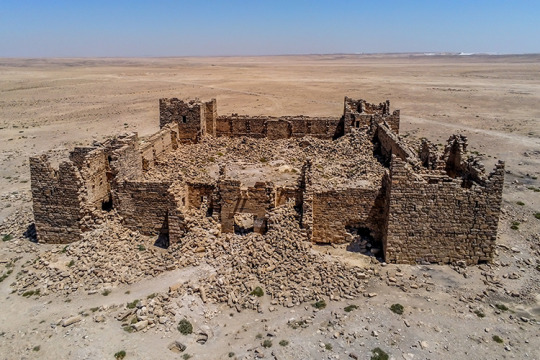
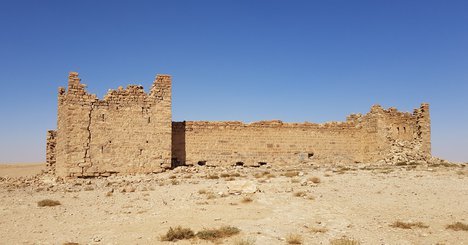
#Spy Satellite Photos Reveal Hundreds of Long-Lost Roman Forts#unknown Roman-era forts#iraq#syria#Roman Empire’s eastern border#ancient artifacts#archeology#archeolgst#history#history news#ancient history#ancient culture#ancient civilizations#roman history#roman empire#Qasr Bshi
49 notes
·
View notes
Text

As the others filed out to the back yard, Roman glanced over at the dining room table where Wanda had sat only minutes before and frowned. He’d heard her ideas more than once, both about synths as well as how Arkhelios could be improved. It was an impossible topic to avoid when she constantly debated Salem about it. Roman knew that the argument they’d been having in the study earlier was an old one, just with new words. Wanda wanted more regulations and programs that would protect and serve minorities, including synths, who she considered essentially human.
Grandfather, of course, fell on the opposite end of this argument. He and Abraham Helios had founded the town with the idea of freedom, above all else. Roman knew that his grandfather believed Abraham had taken it too far in the end though. Why, Roman hadn’t been told, only that there was a greater rift between the two patriarchs in town than Salem would ever admit to.
Nonetheless, Salem and Wanda stood on opposing sides of this argument every time she brought it up (and she was always the one who brought it up). Wanda claimed to want to help those who had less, and Salem believed that it would only impede their own progress, and affect the freedom of everyone else. He still firmly believed in the same concepts of self reliance and self-mediation being a cornerstone to what their freedom was based on.
#arkhelios#sims stories#sims 2#sims 2 stories#sims 2 gameplay#ts2#my posts#Arkh Ch6#POLITICS? IN MY SIMS STORY? more likely than you'd think!#no not really but 🤷♀️#have some Arkhelios politics#they really do border on a monarchy for a place that claims they have no rules essentially#Roman Bellamy#Salem Bellamy
13 notes
·
View notes
Text






























Ph. 25&27 - Maria Mandea
Kodak Vision 3 250D / Pelicula Daylight 400
#seaside#eforie#fishes#sculpture#train#vama veche#bulgaria#border#art gallery#nicodim#calciu space#contemporary art#trains#caile ferate romane#cfr#romania
4 notes
·
View notes
Text
there's something very funny about a historian going, 'so the emperor made a very reasonable and normal request of his cousin,' and I'm like. objectively. I understand. however, that emperor massacred his cousin's entire family when the guy was like, five, so.
#like objectively. sure yeah. whatever. imperial roman border crisis. we've all seen it.#if you expect to experience an imperial roman border crisis while emperor you may want to hold off on killing all your male relatives#except for two who are too young to be threats because they will grow up and caligula's ghost is going to show up with popcorn#and one of them is going to realize that this is the PERFECT opportunity to Do A Coup.
4 notes
·
View notes
Text
had a vision for a photo set up and it wouldn't leave my mind. i got up this morning hungover no makeup hair doing whatever it wants but by god. it worked [no nudity but borderline sorry]

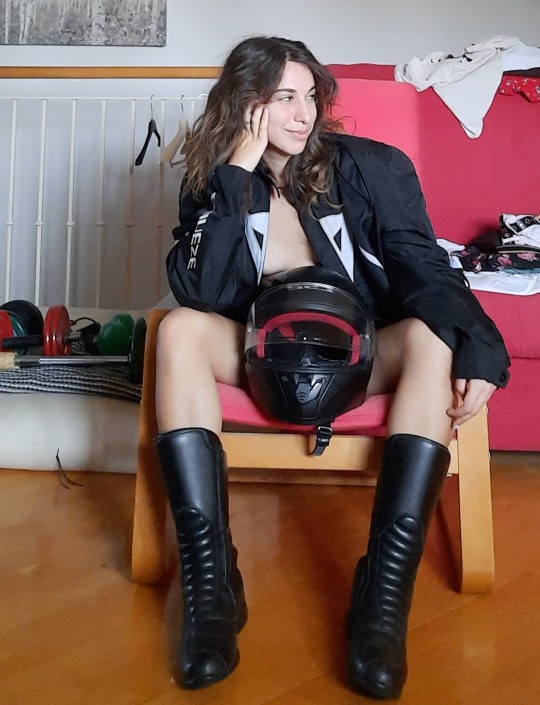


#the power of lesbianism#these boots are fucking insane. kaneda if he slayed#im aware this is way over border on what i would post usually but im very comfortable abt sharing these. shrugs#a#i had in mind that art piece that always makes the rounds here with the barbarian and the roman helmet#dyke#oct23
18 notes
·
View notes
Text
i think they should do all of logans funeral in doric. just for a laugh.
#I KNOW HE DOESNT SPEAK IT ANYMORE BUT ITS FUNNY#fuck you. scotsifies your succession characters. gives each of your succession characters a different scots dialect for the laughs.#logans doric (obvs)#connor insular or ulster#kendall west#roman sec#and shiv south/borders#logan roy#succession
4 notes
·
View notes
Text


Roman Jet Bracelets and Bangles, The Yorkshire Museum, York
#romans#roman empire#rome#roman jewellery#jewellery#design#relic#artefacts#roman border#roman army#roman society#roman costume#ancient living#ancient cultures#archaeology
253 notes
·
View notes
Text
Early Medieval, Roman Structures Found Close to England-Wales Border at UK’s Wrexham
Archaeologists are excavating the Early Middle Ages and Roman settlement site at Wrexham, Wales, close to the border with England, in the UK. Photo: University of Chester / Newsweek An “extremely rare” discovery of structures from the early medieval period and remnants of a Roman settlement has been made in Wrexham, a city and county in northeast Wales, close to the Anglo-Welsh border. This…
#Ancient Rome#Britain#Britannia#Denbighshire#Early Middle Ages#England#England-Wales border#Great Britain#Holt#legionary#medieval#Middle Ages#Roman Empire#Roman settlement#UK#Wales#Wrexham
0 notes
Text








Limes trail - border of the Roman Empire ( Bad Hönningen & Rheinbrohl / Germany )
#roman empire#ancient rome#hiking trail#explore#adventure#nature#photoftheday#limes#pickoftheday#aroundtheworld#outdoors#limestrail#landscape#deutschland#rheinland pfalz#hiking#germany#border#trekking#wanderlust#springtime#spring#trip#nature photography#forest#trees#onedaytrip
17 notes
·
View notes
Text
Tumblr Biography: Julius Caesar 🕊️
🚫 Without an heir, Caesar adopted his 🍼 great-nephew Augustus. But would his chosen successor prove worthy or would he 🗡️ betray Caesar's legacy?
#heir to the empire#the heiress#octavian#gaius octavius#augustus#pax romana#roman empire#roman emperors#roman period#onwards and upwards#military strength#border security#governance#policy#economic prosperity#prosperity#abundance#standardization#infrastructure#cultural assimilation#legal reform#roman law#latin language#roman culture#roman religion#emperor caracalla#caracalla#marcus aurelius#marcus aurelius antoninus#stoicism
0 notes
Text
Roman Limes
Limes means road – originally, it really was a road connecting border fortifications with each other. Over time, it began denoting a geographically shaped or fortified border. It is incorrect to use limes as a term for all borders of the Roman Empire, though the world will sometimes be used in such a manner as well. System of border fortifications fulfilled its functions generally from 1st until…

View On WordPress
#antonine wall#border wall#diocletians limes#hadrians wall#late roman limes#limes#limes africanus#limes alutanus#limes arabicus#limes britannicus#limes dacicus#limes germanicus#limes moesiae#limes orientalis#limes transalutanus#roman#roman limes#trajans wall
0 notes
Text
Roman Limes
Limes means road – originally, it really was a road connecting border fortifications with each other. Over time, it began denoting a geographically shaped or fortified border. It is incorrect to use limes as a term for all borders of the Roman Empire, though the world will sometimes be used in such a manner as well. System of border fortifications fulfilled its functions generally from 1st until…

View On WordPress
#antonine wall#border wall#diocletians limes#hadrians wall#late roman limes#limes#limes africanus#limes alutanus#limes arabicus#limes britannicus#limes dacicus#limes germanicus#limes moesiae#limes orientalis#limes transalutanus#roman#roman limes#trajans wall
0 notes
Text
A Reflection Of Venus

chapter: 1 chapter 2 | 3 | 4
pairing: emperor geta/emperor caracalla x acacius' daughter!reader
summary: For years Acacius was able to keep his precious and only daughter away from the Emperor's eyes. But after his latest victory, he couldn't evade the already inevitable.
warning(s): mention of alcohol consumption | swearing | sexual implications | semi-edited | english is not my first language, faults may occur | please let me know if i missed anything
Note: Reader is the daughter of General Acacius and his wife, which is not Lucilla in this fanfiction.
word count: 3.1k
General Acacius was a hero for the Roman Empire, a sun that was burning brighter with every new victory he won in a new war campaign ordered by Emperor Geta and his twin brother Emperor Caracalla. The reign of the twins was nothing compared to one of their deceased father Emperor Septimius Severus, who was once one of the closest friends and brother-in-arms of Acatius. While Severus fought wars mainly to protect the borders of the already massive Empire, his sons' hunger for expansion became clear from the very first day they inherited the title "Emperor". And general Acacius became their tool in this project. Nothing was too expensive, they backed him with legions, war-ships, the best equipment and supply, and the capable general became an unstoppable force, a soldier of the God Mars himself. But at what cost?
As the years went on, he'd rarely been home, always travelling with his marching soldiers and being on the front line of every battle he fought. And when he came back, he felt sick from all the pomp and gold the Emperor's threw at him, the victory processions through Rome, while the smell of blood still lingered in his nose and the cries of the women and children echoed in his mind. It was one of those days. The sun stood high over the wide street that lead to the Palatin, the sides filled with the cheering crowd - common people, soldiers, slaves, senators, merchants, they all celebrated his victory in a triumphant procession. His marching soldiers were led by Acacius chariot, clothed in the white armor of a victor. His face could've been one to be carved in marble, stoic and upright, facing the great Palatin, where the Emperors would await him.
Geta and Caracalla - the twin-sons of Septimius Severus, Emperors of Rome. They stoof there in golden Armor like sun gods with their golden crowns on top of their short gingerblonde hair. Their unusual pale skin was a testament to their wealth as they could afford to stay out of the sun, which burns especially hot on summer days like this one, and of course on the battlefields in Africa, where Acatius' men had to fight against the rebellious Nubians. They awaited their victor with proud smiles on their lips, while Acacius' procession ended at the footsteps of the Emperor's palace. He walked the marble steps towards them, his long cloak moved in tact with his walk. He didn't look forward to see the faces of Rome's tyrants again, but they hadno idea.
Instead, he greeted them as he was used to. His hand on his chest, speaking the words.
"I greet you, my Emperors. Nubia is no more. I present a new victory to you, to the realm and to the Roman people."
With a proud look on their faces and a wide smile, the twins stepped forward. Emperor Geta hold the laurel wreath of victory in his hands and places it on top of Acacius' greying hair.
"And Rome rewards it's heroes with gratitude and admiration. We bow to your victories, General Acacius."
With those words, he offered him to turn around and face the celebrating crowd. Geta and Caracalla took their places at his side, giving him a moment of spotlight, applauded by the people, while they did benefit from it as well. Acatius was their general, their armored knight. Every victory he presented was another triumph for their own reign and power. After the earned celebration in front of the common folk, the Emperors and Acacius retreated inside, where servants quickly served them wine for a toast.
"Another great victory, you never disappoint us, dear Acatius," Geta expressed and hold his glass up for a toast, his brother Caracalla following the gesture. "To the glory of the Roman Empire".
"To the glory of your reign", Acacius lied and took a sip from his glass, trying to numb himself a bit with the taste of the alcohol. How he hated conversations with both of them.
" But don't get too comfy here, my brother and i were already discussing another campaign soon. You'll get everything you need, just tell us how many soldiers and ships and it will be granted," Geta explained, which left a bitter taste in Acacius mouth. His jaw clenched for a moment, while he tried everything not to show his distaste about another war campaign.
"Please forgive me, my Emperor, but isn't the realm big enough already? Rome has already difficulties to feed the people. Further expansion would-"
"They can eat war", Emperor Caracalla threw in with an almost diabotical grin, while Acacius got a warning eye from Geta. It was clear that his words weren't the ones both wanted to hear right now.
"Don't worry about things like that, Acacius. You're a military general, your job is to win battles - nothing more. Do you understand?"
"I understand," he answered, even though he hated to hear that he was reduced to this. He'd experienced war and peace alike and therefore he knew about the dangers of continuing this madness. Moments like this really let him question if those maniacs were of the same blood as Septimius Severus.
"But you're right, you've earned yourself at least a bit of rest - one or two weeks. Don't worry, we've taken care about the wellbeing of your family. They got everything they needed and more in our attempt to show our gratitude for your service to the throne. Speaking of which.... we expect you to join us for a great feast tonight - here in the palace. A party to celebrate your victory, it is accompanied by a couple of fights in the arena tomorrow," Geta explained joyfully, while Acatius tried to keep his mask up.
"I am incredibly honored, but would prefer to spend time with family after being away for such a long time."
"The Emperors show you their gratitude and you're insulting us. We expect you to come and you will come", Caracalla hissed with a sudden shift of tone, his eyes staring at Acacius in clear anger, while his brother placed his hand on his shoulder in an attempt to calm him down. But his staring eyes were warning Acatius once again.
"Of course, we don't just invite you, but your whole family. Bring your wife and... you have a daughter, if i'm not mistaken? We haven't had the pleasure of getting to know her yet, since you never brought her to any festivities. I am sure she will be delighted, if you don't plan on hiding her again."
Acacius stood there in silence, a reaction that made Caracalla burst out into laughter as if he'd just heard the funniest joke from his brother. The respected general didn't even look at him, why should he. Standing here in front of them should've been an honor, yet it felt like a disgrace. They were nothing but spoiled kids with the power of an empire in their hands. And now they even forced him to reveal his dear daughter to them. Something he tried to avoid for too long, knowing fully well about the debauchery and excessiveness of Geta and Caracalla.
"We're waiting for an answer, Acacius?", Caracalla purred with a wide grin on his pale face, revealing his gold tooth.
"It will be an honor to be your guest... together with my daughter."
_____________________________________________
You watched the face of your father sunken away in his thoughts, as you made made your way to the palace in a palanquin carried by a couple of slaves and protected by soldiers. The city was painted in darkness which made the palace seem like a temple with all the lights that welcomed you. It was an exciting moment for an upper-class lady to be a guest at the palace, especially for you, a woman that usually stayed away from the most parties. Not because you wanted to, but because it was an order from your father. You obeyed, yet it bothered you, even more when you'd reached the age of a young woman - the age in which it was expected from you to find a proper husband.
"Why are you so worried, father?", you finally managed to get off your lips, pulling Acacius out of the battle he fought in his head. He couldn't just tell you that he despised all of this and especially the Emperors himself as he couldn't be sure if someone outside this palanquin could hear him. So he simply took your hand and placed a soft and caring kiss on the ring that had been a present for your last name day.
"I guess I'm rather tired than worried. The parties in the palace are always quite excessive, music, dances, feasts... i just came back from the desert and now i have to enjoy all those things", he sighed and looked at you. "And i don't want to stay too long, especially not till the orgy starts. The servants will come and bring us home before that." And even you knew he would rather go and murder Dyonisos himself than allowing his daughter to stay and witness this.
All those words and yet you knew it wasn't everything.
"I'm glad that you take me with you this time. I've only known the imperial palace from afar," you confessed, while you straightened the long, blue dress you wore. It was decorated with all sorts of silver embroidery and jewelry, encapturing the stars and moon. Your long hair was styled by your servant Yanna into a high braid and finalized with a silver diadem. For the first time you really got the chance to make yourself so presentable that you almost felt like a princess. In the end, you were about to meet the Emperors which made it important to look like the woman you were - the daughter of a general. And you also presented his household tonight, because your mother felt sick tonight. She often suffered from migraine, which kept her a prisoner for days sometimes.
"You really look beautiful", your father said to you, it was honest, but there was a hint of worry in his eyes, which you still couldn't grasp. But there was no chance to take this conversation further as the palanquin stopped. Acacius got out first to help you out. He knew the way as it wasn't the first time for him to attent an official ceremony or party here. Through a long corridor you reached a large room with with an open access to the garden terrace facing the beautiful gardens. It was packed with people from the Roman upper-class, wealthy merchants, politicians and military officers, who were accompanied by their wives, sons and daughters. While they chatted and feasted on the large selection of delicious looking food, a group of musicians played their melodies to which professional dancers moved their bodies.
All those private parties at the homes of your friends seemed to vanish straight from your mind, nothing could be compared to what you were seeing now. It nearly took your breath away, while two royals were watching you from the other side of the room.
_____________________________________________
Geta and Caracalla were sitting on a higher ground, which was highly decorated with two golden chaise longues, cushions and velvet drapes. They were accompanied by a selected group of slaves, women and men, who were assigned to bring them anything they wanted, to do anything they wanted.
While Geta was in in a conversation with one of the senators, which clearly bored him according to his facial expressions, it was Caracalla, who noticed the new guest first, while he fed his little monkey Dondus a grape.
"Such a shame that he hid his daughter for so long. She is a gorgeous looking bird, don't you think? ", he whispered to his brother with a mischievous grin, patting his arm so that he would turn his attention to Acacius and you. Geta's eyes quickly went to you, admiring the way your dress hugged the shape of your curves.
"The gods must've sent us Venus herself to honor us with her presence," Geta answered, while an unreadable smile played on his lips. „No wonder our dear General is so protective of her. Is she already promised to someone?“
„Why do you ask me!?“ Caracalla snapped back, as if his brother didn’t know that he had a lot of spies around the city, who delivered him the newest gossip from the streets of Rome. With an annoyed eye roll, he leaned forward, adjusting the golden laurel wreath on his head. „No, she is a blank parchment. Probably untouched too.“
Geta still watched you with an intense interest as if you were a rare diamond, he needed to claim. But he was not the only one in this room, because Caracalla stared at his brother, noticing the way he looked at you. There it was again, the old melody. Whenever he wanted something, Geta wanted it too. They already shared the title of Emperors, their wealth, their whores… It was already something that cooked in him for a long time. But now he had an eye on you and wasn't happy about the fact that Geta might try to get you too.
Before he could even bring this thought to an end, his twin brother Geta already stood up from his chaise lounge and made his way through the crowd, the direction was clear. Caracalla's nose twitched in a mixture of nervousness and anger, and he got up quickly as well, not as gracefully as he wanted to, but he didn’t care. He had to tame the inner urge to backstab his brother before he could even reach you.
_____________________________________________
You still stood at the side of your father sipping on your first goblet of fine wine, while your eyes went over all the different guests and the excessive decor. Your father was sunken in a conversation with another general, Marcus Galbanus, an old friend and brother-in-arms of Acacius. But their conversation quickly stopped as soon as the Emperors approached them. Both your father and Marcus Galbanus lowered their heads and greeted them according to the etiquette, while you curtsied deep. This was the very first time you got the chance to meet the Emperor's of Rome Caracalla and Geta. And given the importance of those two figures, you even felt a little nervous.
"We almost feared you wouldn't show up to your own party, Acacius. But we're happy you made your way here... we already heard that your dear wife lays sick. Please, send her our best wishes. Nonetheless we would be delighted if you could introduce us to your company tonight", Geta demanded in a playful tone, knowing how much Acacius had tried to delay this. Caracalla stood at his side, his staring blue eyes drilled themselves into your appearence. Even though he was a man that had tasted a lot of men and women, one even more sensual than the other, your whole appearence, your face, your lips, your smile, everything - you reached a sentience in his mind that could only be gifted by the gods. The mere thought of having you infected his brain like a curse.
You could sense the tension that raised in your father as if everything in him resisted the situation. Yet he placed his hand softly on your shoulder and did as they wished. "This is my daughter, y/n..."
"I'm honoured to meet the Emperors of Rome", you said in a soft voice, earning you an appreciating smile by Geta and an unreadable grin of Caracalla.
"Oh the pleasure is on our side, my dearest. How do you like this Ceremony in honor of your father's victories?", Geta asked. But before you could even answer, his brother added, while he took another sip of his wine "Your father is a Roman hero through and through, isn't it right Acacius?" His tone had something else in it, almost as if it was some kind of mistrust. But you needed to ignore the irritation you felt and simply nodded.
"It is breathtaking. I've never witnessed something like this and it makes me incredible proud to see the gratitute he earned himself through the love he has for Rome and its people," you answered, trying to remind the Emperor's of Acacius loyality, which was undoubtful.
"Then you'll enjoy the ceremony in the arena tomorrow as well, i'm sure. Please, we invite your father and you to be our guests."
"I don't think that such entertainment is suited for a young woman of her status," your father suddenly interfered in a calm yet set tone, only earning the laugh of Caracalla. "Let your daughter decide for herself, General."
The atmosphere shifted to an unspoken intensity. You could sense your father's worries and given all what you've heard from the colosseum, you didn't really think of it as something worth to witness. Seeing people die in such a terrible way only for the pleasures of the masses seemed like a farce. Acacius always called it the most needless form of brutality amongst humans, he despised this himself and therefore avoided going into the arena whenever he could. But you also read the eyes of Geta and his brother, who waited for your answer and would not accept a simple 'No'.
"It would be an honour," you answered, and Geta leaned forward a bit, which made your father's jaw clench in anger. Not because of your answer, he was aware that a choice was not existing, when facing an Emperor, but because the way the twins looked at you as if you were a price they could simply claim. But you were a smart girl and definitely not naive, so he fully relied on that.
"So this is a 'Yes'?", Geta asked again and you looked him straight in the eyes, not backing off. "Yes."
"Excellent!", Caracalla shouted and clapped into his hands. "We'll have a lot of fun tomorrow."
The corners of Geta's mouth twitched to a smile and he nodded in response to his twin. Yet he hid his displeasure of having him as a rival in this little game. It was clear that Caracalla had layed his eyes on you too, but he won't allow him to simply take and fuck you like you were a common whore. Maybe you could've potential for something more and strenghten his position as well as his popularity. Because both Emperors were still unmarried - and it was expected from them that this would change sooner or later.
#gladiator 2#gladiator ii#emperor caracalla#emperor geta#general acacius#geta x reader#caracalla x reader#joseph quinn#pedro pascal#fred hechinger#gladiator ii imagine#kabuki writes
2K notes
·
View notes